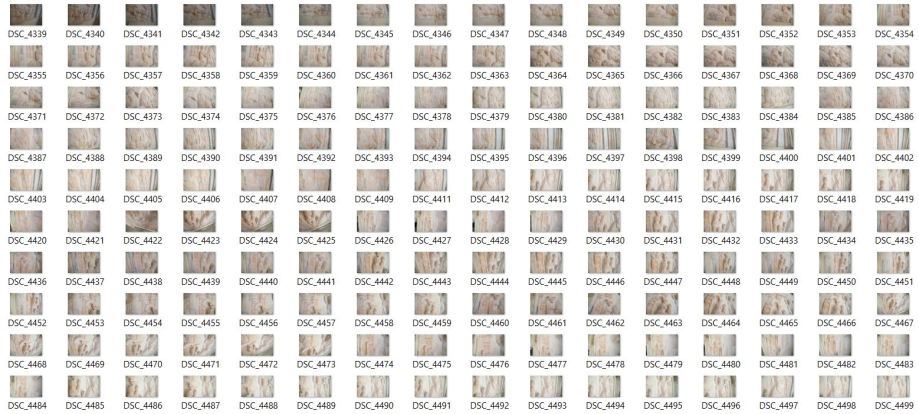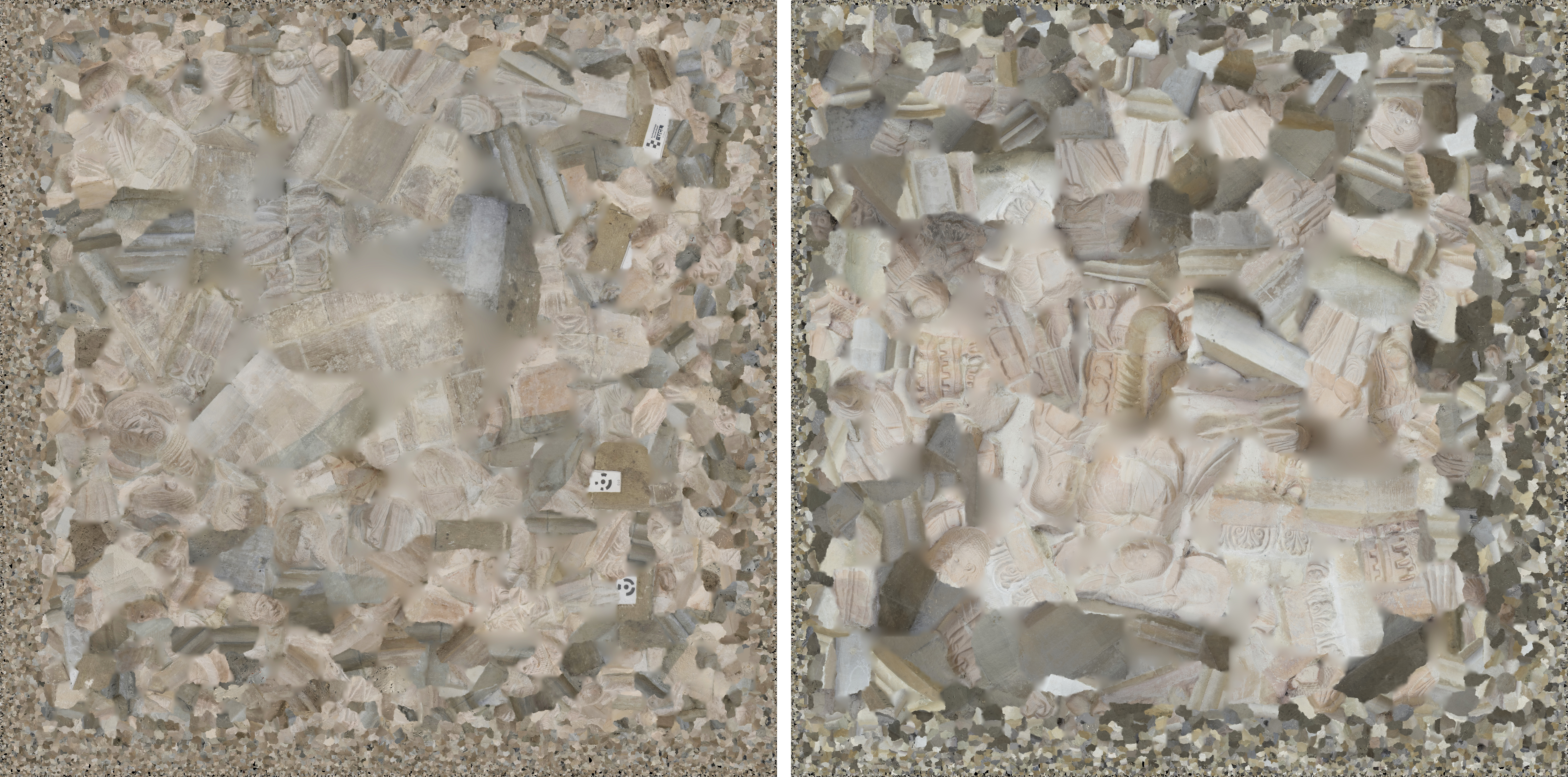Friday 22nd July is Ask an Archaeologist Day. We spoke to our Cathedral Archaeologist, Dr Michael Shapland FSA, about the recent project to 3D scan the Chichester Reliefs by UCL Institute of Archaeology, two panel sculptures illustrating the story of Lazarus.
Click the play button below, using your mouse to zoom and drag to explore the scans in detail. You can also find annotations of what the Reliefs depict by clicking 1, 2 and 3.
Can you talk us through the process of scanning the Reliefs at the Cathedral, and creating the digital scan?
Until recently, the only way of making a 3D digital scan of an object was to use an expensive piece of kit called a laser scanner, which works by bouncing many thousands of lasers at its target, and measuring the tiny differences in the time taken for the laser to be reflected back.
In recent years a much more accessible technique has been developed, known as photogrammetry, which is what we used for the Romanesque Reliefs. This works by taking hundreds of photographs of the Reliefs with a standard digital camera, trying as much as possible to overlap each photograph with the one before, and to capture all of their awkward hollows and corners. These photographs are then fed through computer software which is able to calculate the original shape of the target object just by looking at all these photos. The computer then uses this information to produce an accurate full-scale model, over which it wraps all of the photographs in order to produce the 3D scan that we can see.

What are some of the key details and features that the digital scan reveals about the Reliefs?
The best way of examining the Reliefs will of course always be the naked eye. The purpose here was instead to create as detailed a record as possible, following the recent decision to remove the protective glass screens from in front of the Reliefs. This way, any changes or degradation that may happen over future years can be measured against how they were in the spring of 2023.
Interestingly, back in 1851 a full-size plaster cast of both Reliefs was made by Giovanni Franchi & Son for display in the Great Exhibition. These casts were purchased by the Victoria & Albert Museum in 1864, where they remain on display in the famous Cast Courts, alongside copies of other notable sculptures such as Trajan’s Column and Michelangelo's David. It would be interesting to measure the current scans against these earlier copies, to understand how they may have changed over the past 170 years.
Were there any surprises or unexpected discoveries that emerged during the scanning process of the Reliefs?
One of the unexpected by-products of the scanning process was the mosaic of all the hundreds of photos that the computer produced, prior to wrapping these images around the virtual 3D model. This mosaic looks extraordinarily strange, as if the Reliefs have been melted and re-solidified: the bodies and faces from the various figures all amalgamate with fragments of architecture and other decorative elements, receding into infinity around the mosaic’s edge. This could be seen as an accidental modern re-working of these ancient images, produced with technology that would have been unfathomable to the craftsmen who produced the originals.

How does the digital scan contribute to our understanding of the historical and artistic significance of the Reliefs at the Cathedral?
It is hard to grasp quite how much sculpture and artwork was lost from churches, monasteries and cathedrals across Britain five centuries ago, during the Reformation and subsequent episodes of religious strife. These panels are two precious survivors, created in the early 12th century and discovered in 1829 behind boards on the south-east pier of the Norman crossing, above the choir stalls. They were then moved to their present position, which would have saved them from destruction when the spire collapsed in 1861. These are thought to represent two of perhaps eight original panels telling the story of St Lazarus, which may have formed a great chancel screen extending the full width of the crossing. The fragments of at least one other panel were also found in 1829, which remain in the cathedral’s collections but have never been assembled. The possibility therefore exists to create scans of these other fragments and then assemble them virtually, in a way which would be impractical in the real world.
What challenges did you face in capturing the Reliefs accurately in the digital scan, and how did you overcome them?
Modern photogrammetry is certainly a great deal easier than either laser scanning or even plaster casting, since all you need is a decent camera and the right software. The most awkward aspect in this case was the lighting: the camera’s flash cannot be used, since it would create too many harsh and changeable shadows which would confuse the processing software. However, the Reliefs are presently lit by quite harsh spotlights high up in the cathedral ambulatory, which created shadows of their own as I moved around. The cathedral is presently in the process of installing a comprehensive new lighting system, which will transform how its internal spaces and artworks are appreciated, including the Reliefs. This will involve a far more sensitive and flexible illumination, which would make a similar exercise a great deal easier in the future.
How do you envision the digital scan enhancing the experience and appreciation of the Reliefs?
It is seldom appreciated in the present how much a medieval cathedral such as Chichester would have been a riot of colours and textures that would have looked outlandish – even garish – to our modern perception of how these interiors should look. The Reliefs would have been no different, most likely brightly painted, with the eyes of the figures set with gems or coloured glass: the deep sockets for these can still be seen I their faces today.
A recent exhibition titled ‘Chroma: Ancient Sculpture in Color’ at the Metropolitan Museum of Art in New York featured reconstructions of ancient statuary which had been brightly coloured to convey a sense of their possible original appearance to a modern audience. It would be extremely straightforward to similarly experiment with different colours and finishes on the virtual 3D models of the Chichester Reliefs: these could be presented to visitors’ smartphones as an augmented reality overlay, for example. It would also be quite possible to use a 3D printer to create full-scale versions of the Reliefs accurate to the nearest millimetre, which could be coloured and presented alongside the originals. The scope for applying these methods and approaches to other parts of the cathedral is likewise considerable.